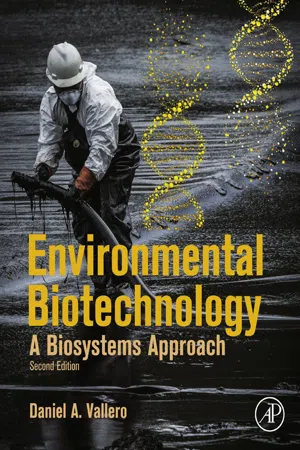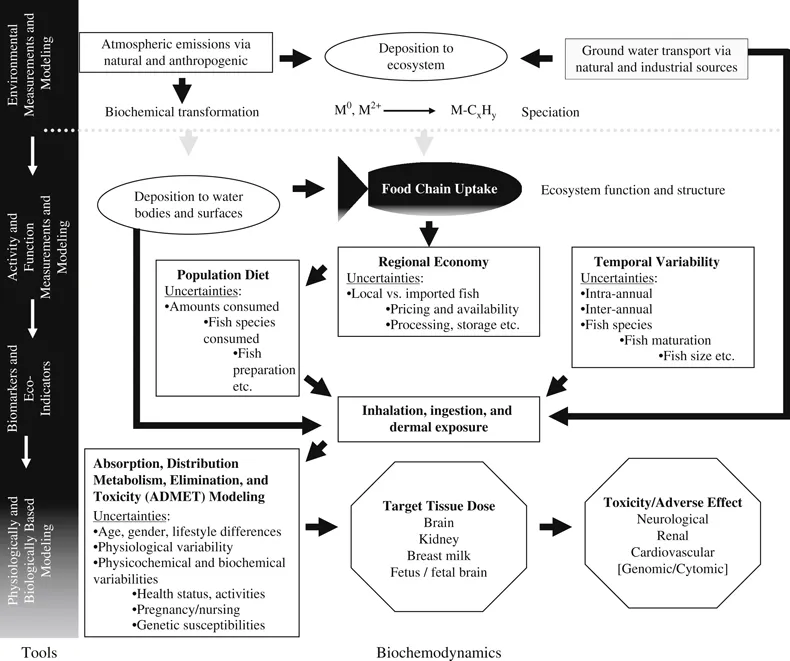
- 746 pages
- English
- ePUB (mobile friendly)
- Available on iOS & Android
About This Book
Environmental Biotechnology: A Biosystems Approach, Second Edition presents valuable information on how biotechnology has acted as a vital buffer among people, pollution, and the environment. It answers the most important questions on the topic, including how, and why, a knowledge and understanding of the physical, chemical, and biological principles of the environment must be achieved in order to develop biotechnology applications.
Most texts address either the applications or the implications of biotechnology. This book addresses both. The applications include biological treatment and other environmental engineering processes. The risks posed by biotechnologies are evaluated from both evidence-based and precautionary perspectives. Using a systems biology approach, the book provides a context for researchers and practitioners in environmental science that complements guidebooks on the necessary specifications and criteria for a wide range of environmental designs and applications. Users will find crucial information on the topics scientific researchers must evaluate in order to develop further technologies.
- Provides a systems approach to biotechnologies which includes the physical, biological, and chemical processes in context
- Presents relevant case studies on cutting-edge technologies, such as nanobiotechnologies and green engineering
- Addresses both the applications and implications of biotechnologies by following the lifecycle of a variety of established and developing biotechnologies
- Includes crucial information on the topics scientific researchers must evaluate in order to develop further technologies
Frequently asked questions
Information
Environmental Biotechnology
An Overview
Abstract
Keywords
Aerosol; Antibiotic resistance; Benefit/cost ratio; Bioengineering; Bioremediation; Biotechnology; Comprehensive Environmental Response, Compensation and Liability Act (CERCLA); Dual use; Engineering ethics; Environmental assessment (EA); Environmental ethics; Environmental impact statement (EIS); Exposome; Exposure assessment; Genetically engineered (GE); Genetically modified organism (GMO); “Gray goo”scenario; Life cycle analysis (LCA); National Environmental Policy Act (NEPA); Particulate matter (PM); Phytoremediation; Precautionary principle; Reliability engineering; Risk analysis; Risk assessment; Risk management; Risk trade-off; Superfund; Systems theory; ToxicokineticsEmergence and Biochemodynamics

Table of contents
- Cover image
- Title page
- Table of Contents
- Copyright
- Dedication
- Preface
- Chapter 1. Environmental Biotechnology: An Overview
- Chapter 2. A Question of Balance: Using versus Abusing Biological Systems
- Chapter 3. Environmental Biochemodynamic Processes
- Chapter 4. Systems
- Chapter 5. Environmental Risks of Biotechnologies
- Chapter 6. Reducing Biotechnological Risks
- Chapter 7. Applied Ecology
- Chapter 8. Biotechnological Implications: A Systems Approach
- Chapter 9. Environmental Risks of Biotechnologies: Economic Sector Perspectives
- Chapter 10. Addressing Biotechnological Pollutants
- Chapter 11. Nanotechnology and Emerging Sciences
- Chapter 12. Mechanisms and Outcomes
- Chapter 13. Analyzing the Environmental Implications of Emerging Technologies
- Chapter 14. Responsible Management of Biotechnologies
- Appendix 1. Background Information on Environmental Impact Statements
- Appendix 2. Cancer Potency Factors
- Appendix 3. Verification Method for Rapid Polymerase Chain Reaction Systems to Detect Biological Agents
- Appendix 4. Summary of Persistent and Toxic Organic Compounds in North America, Identified by the United Nations as Highest Priorities for Regional Actions
- Appendix 5. Sample Retrieval from ECOTOX Database for Rainbow Trout (Oncorhynchus mykiss) Exposed to DDT and its Metabolites in Freshwater
- Glossary
- Index